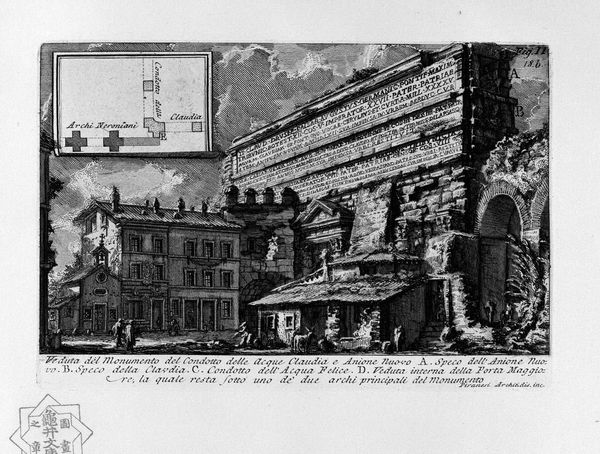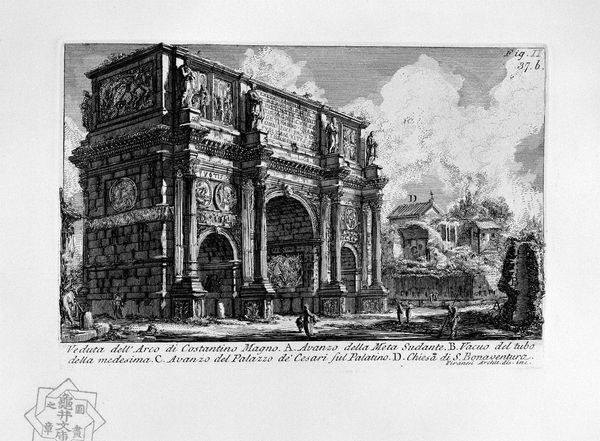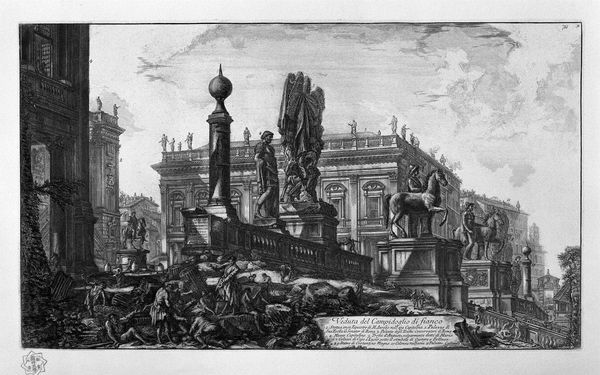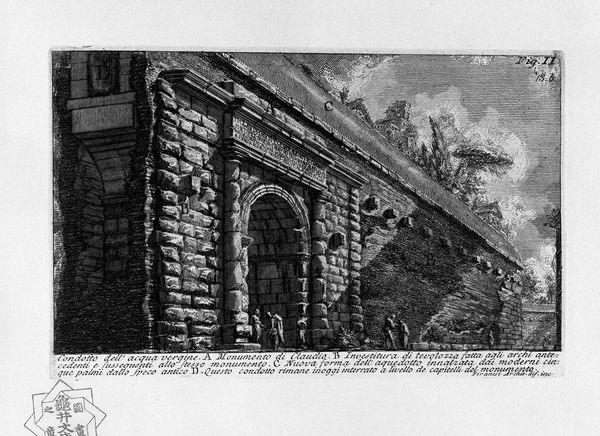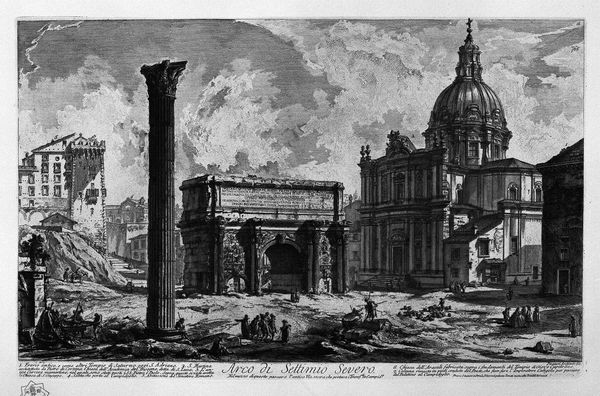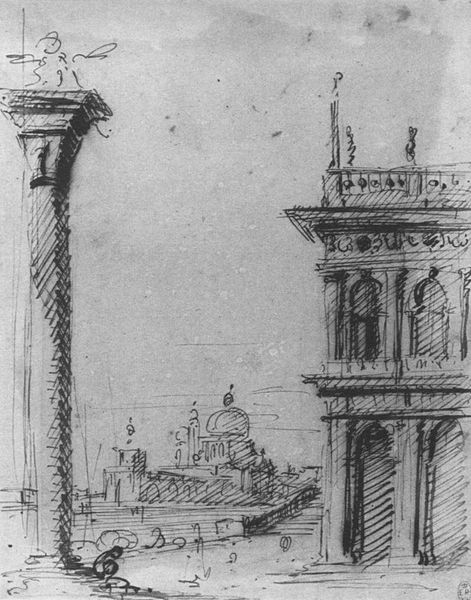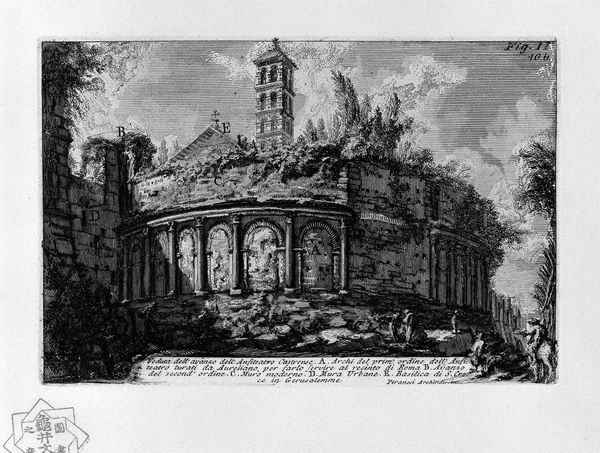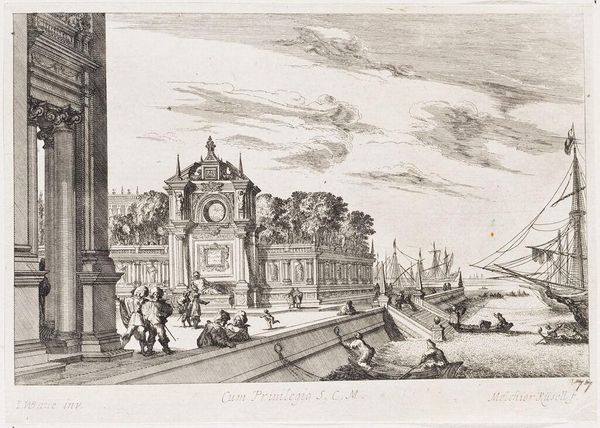
print, etching, engraving, architecture
#
baroque
#
neoclassicism
# print
#
etching
#
old engraving style
#
romanesque
#
cityscape
#
history-painting
#
engraving
#
architecture
Copyright: Public domain
This etching of Trajan’s Column was made by Giovanni Battista Piranesi, sometime before 1778. It’s a great example of the etching process, where lines are incised into a metal plate, which is then inked and printed. The materiality of etching allows for incredibly fine detail. Look at the way Piranesi has rendered the textures of the stone, capturing the effects of age and wear. Etching was also a relatively efficient way to produce images in multiples, contributing to a growing print culture in the 18th century. Piranesi's choice of subject also speaks to the social context of his time. The column itself, a monument to Roman imperial power, is presented amidst a bustling cityscape. His focus on architecture and urban spaces reflects a broader interest in antiquity and its relationship to contemporary life. The very act of creating and disseminating these prints speaks to a burgeoning art market, where images of the past could be reproduced and consumed on a mass scale. Understanding the materials and processes behind prints allows us to appreciate the intricate relationships between art, labor, and the wider culture in which they were created.
Comments
No comments
Be the first to comment and join the conversation on the ultimate creative platform.

